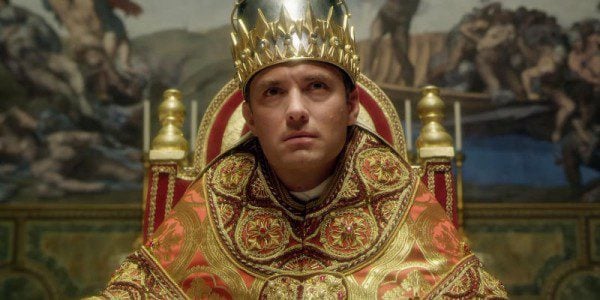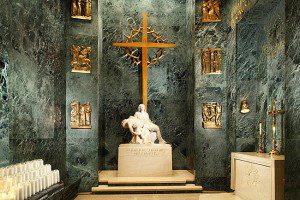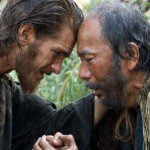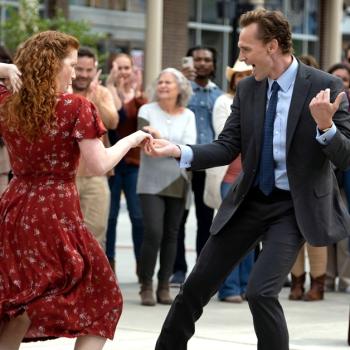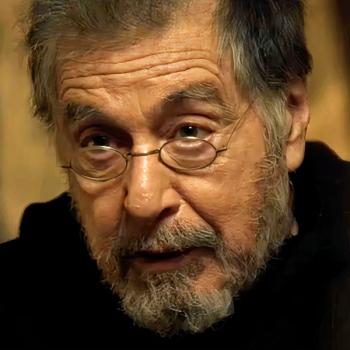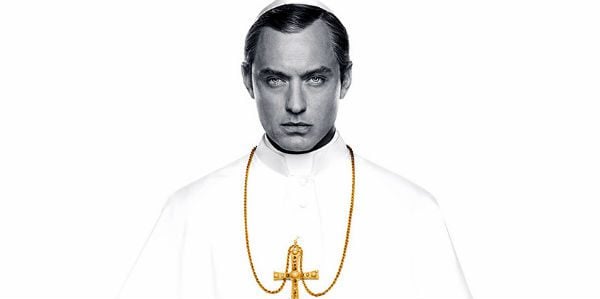 Up front, let me say that HBO’s “The Young Pope” has about as much to do with the real Vatican, or with ordinary Catholics, as “Twin Peaks” did with actual day-to-day life in a small Pacific Northwest town.
Up front, let me say that HBO’s “The Young Pope” has about as much to do with the real Vatican, or with ordinary Catholics, as “Twin Peaks” did with actual day-to-day life in a small Pacific Northwest town.
But should you watch it?
It’s complicated.
I’ve seen the first five episodes of the 10-episode series, premiering Sunday, Jan. 15. It’s set to air twice a week, on Sunday and Monday, for five weeks. If I had access to the next five episodes, I’d watch those, too.
Did it destroy my Faith or make me doubt the truth of Catholicism?
No, because I know better. But not everybody does. And that’s what makes it tricky to talk about “The Young Pope.”
First, the basics.
Jude Law stars as Brooklyn-born, fortysomething American cardinal Lenny Belardo, who is elected to the papacy because the cardinals think his youth makes him malleable. The opposite is true. Abandoned by his hippie parents and raised by nun Sister Mary (Diane Keaton), the newly minted Pope Pius XIII lands like a nuclear bomb in the Vatican, challenging conventions, terrorizing his politically astute Secretary of State (Silvio Orlando), and making the most outrageous statements and proposals.
(Don’t let the opening segment scare you — Italian writer/director Paolo Sorrentino makes liberal use of fantasy and dream sequences.)
The pope acts abruptly, even coldly. He can be tender and saintly, or capricious and cruel. He can charm a kangaroo. He wears white jogging suits and takes long nighttime walks around the Vatican Gardens (where the kangaroo lives). He drinks Cherry Coke Zero for breakfast, smokes cigarettes, and apparently takes his vows of celibacy seriously.
Retrieving the tiered papal crown, he piles on more finery than Cardinal Burke ever dreamed of, and enters a meeting with the cardinals being carried on a litter, flanked by ostrich-feather fans.
(And, in case you were wondering, the Venus of Willendorf — used as a plot point — is actually in Vienna, not the Vatican.)
If there is an anti-Pope Francis, it’s Pius XIII. He may not even believe in God.
At this moment, I know you’re tossing your hands in the air, saying, “I’m not watching this garbage!” I don’t blame you, and I get it, but bear with me.
I didn’t watch “The Sopranos” worrying about its effect on the psyches of mobsters, or “CSI: Miami,” fretting that the Miami-Dade Police Department might suffer by comparison.
Both these series had a gloss of reality, but it was obvious that they weren’t attempting to portray reality. They were pure works of the imagination, drawing on the source material but not bounded by it. If anyone announced that they believed all Mafioso were like Tony Soprano, or that all forensic cops in Miami were just like Horatio Caine, they’d get an eye roll or a laugh.
But so many people (especially the secular media) are ignorant of the Faith — for Pete’s sake, folks took pulpy trash like “The DaVinci Code” seriously — that they might think “The Young Pope” represents life within Vatican walls. After all, the Vatican is a mysterious place, full of ancient ways, pomp and ritual.
I’ll go further than that and say, if you think “The Young Pope” is weird, try actual Catholicism. Looked at from the outside, the Church is a beautiful but strange thing, fraught with apparent contradictions, wrapped in layers of history and tradition, with incense, bells, robes, Latin, Greek, relics, statues and arcane symbols.
The reality of the Church is spectacular and dramatic enough that I wonder why Sorrentino needed to create a fantastic fiction.
All this being said, “The Young Pope” is bizarrely entertaining, and it does ask interesting questions. There’s even a moment when the aggressively enigmatic pontiff declares an end to ecumenicism and fuzzy platitudes, and seeking the approval of the world, that might warm the hearts of some traditionalists.
He wants to slam shut the open windows of Vatican II and return to the Church its aura of mystery and wonder.
Sorrentino also seems to understand one of the paradoxes of the Church today — that younger people can wind up being more orthodox and tradition-minded than their Boomer elders. They’ve seen the wages of the misapplication and distortion of Vatican II, and a fair number of them are flocking back to the Tridentine Mass as a result.
“The Young Pope” is beautifully shot — but not at the Vatican, since you can’t shoot anything fictional there. In place of the Pieta, it looks to me like they might have used the Mother of Sorrows at the Basilica of the National Shrine of the Immaculate Conception in Washington, D.C., or something that looked a lot like it.
The costumes and cinematography are stunning and painterly, and I’m told much of what Piux XIII wears (except probably the tracksuit) has been part of relatively recent papal garb. The script, while it does have clever and affecting moments, also has its share of leaden-clunker lines, many of which seem to be assigned to Sister Mary, who becomes the pope’s closest adviser.
(As an aside, seeing Diane Keaton sweep about in a black habit with a wimple and a white Peter Pan collar is almost worth the price of admission.)
If you can detach yourself from thinking it’s actually about the Church, “The Young Pope” can be puzzling but fun and intriguing. Conversely, I hope its not-infrequent forays into ridiculousness and camp make it apparent even to secular viewers that it’s not to be taken seriously as a representation of the Faith.
As one person on Twitter commented, the series is “bananas.”
I’ll check back with you all after seeing the final five episodes of season one (and yeah, looks like there’ll be a season two).
This is HBO, so there is some language and sexual content (though way less than most HBO series), no violence, but two or three views, from a distance, of Jude Law’s behind.
Image: Courtesy HBO
Don’t miss a thing: head over to my other home at CatholicVote and like my Facebook page; also like the Patheos Catholic FB page to see what my colleagues have to say.


